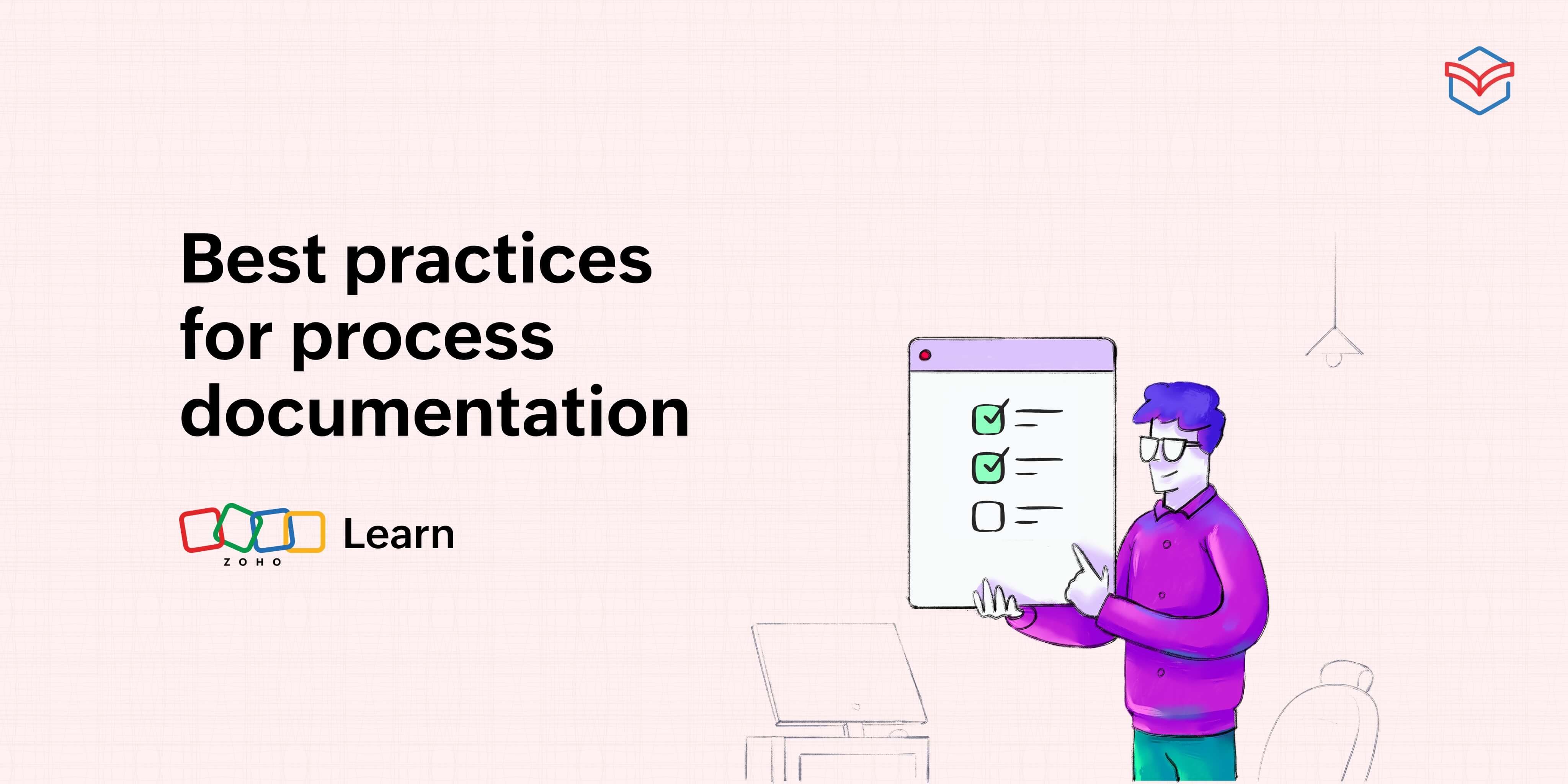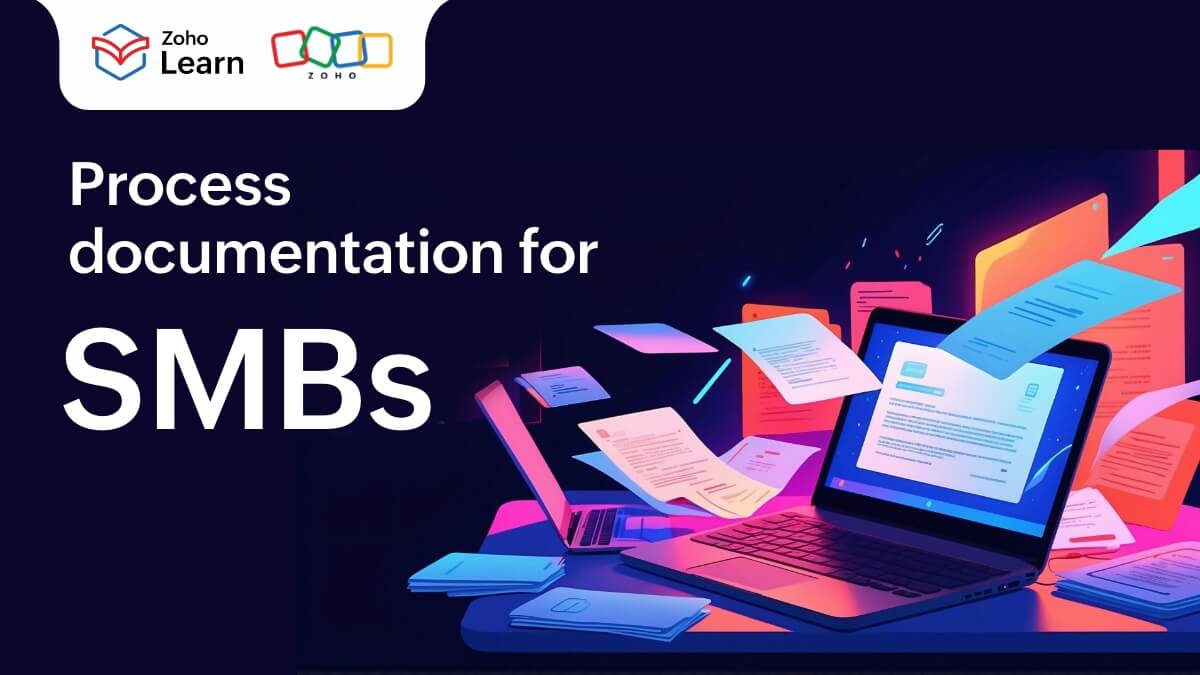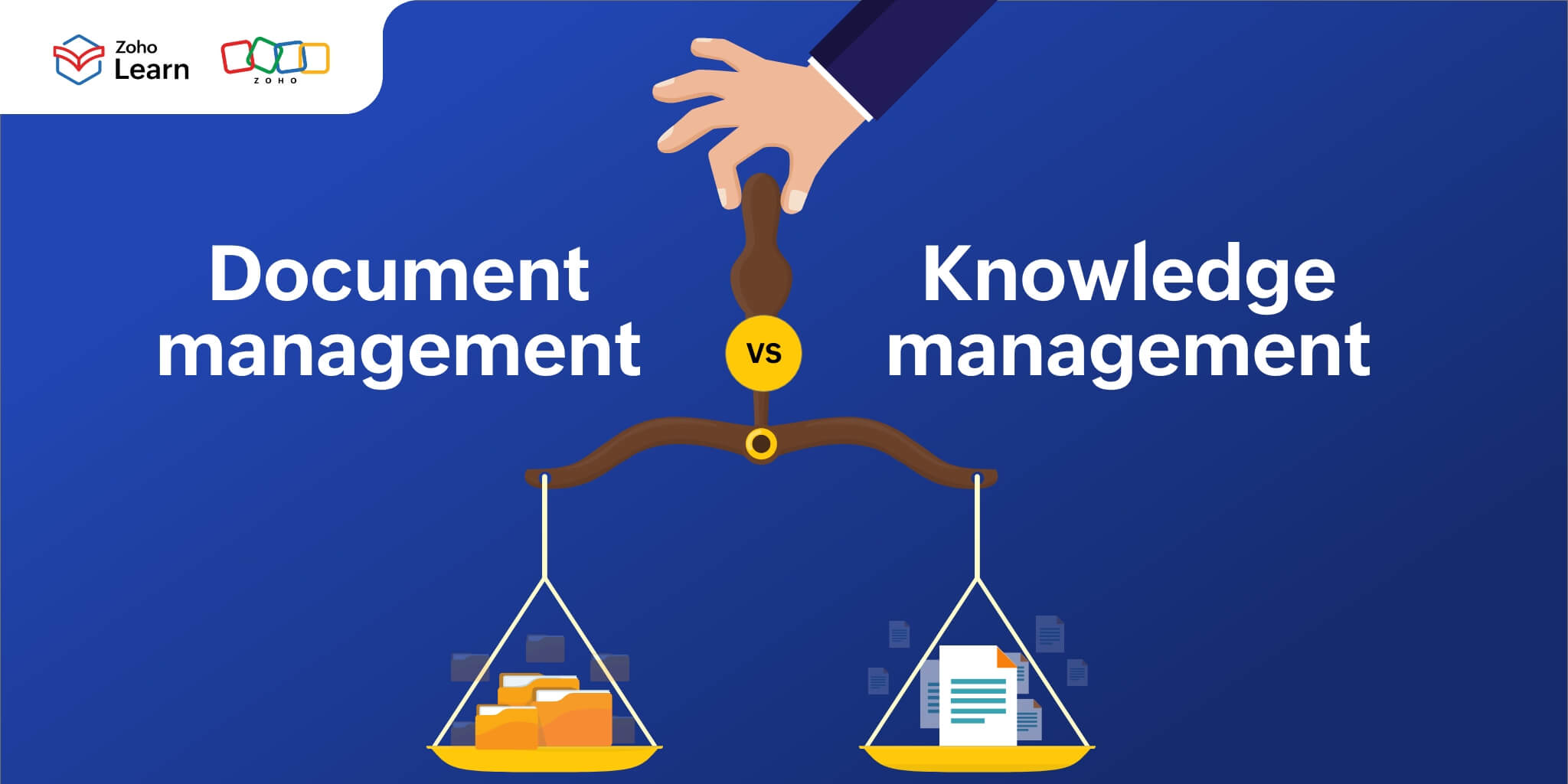- HOME
- Knowledge Management
- Best practices for process documentation
Best practices for process documentation
- Last Updated : April 8, 2025
- 1.9K Views
- 4 Min Read

A significant aspect of how an organization functions revolves around performing numerous routine tasks repeatedly. So, it's important to ensure that the processes being followed are efficient and consistent to improve overall productivity. Documenting the processes ensures that there's a standardized system in place and provides an opportunity for continuous improvement.
What is process documentation?
Process documentation is the method of creating comprehensive records of the processes and procedures followed in an organization. These records consist of clear, consistent, step-by-step instructions of the process required to complete tasks. Creating a comprehensive and effective plan that outlines internal tasks and workflows for completing a process is crucial for ensuring that it runs smoothly and efficiently every time.
The benefits of process documentation
Here are some advantages of implementing process documentation in your organization:
Improved efficiency
Process documentation helps organizations streamline processes by eliminating unnecessary steps and reducing the possibility of errors. This increases the efficiency of individual tasks, which influences overall success and growth.
Consistency
By documenting processes, organizations have a systematic and consistent procedure for all of their tasks. This reduces confusion and misunderstanding between stakeholders, and ensures that everyone involved follows the same set of steps.
Faster training
With proper documentation, new employees have well-documented guidelines and instructions to follow. This enables new employees to learn and adapt to new tasks more quickly.
Knowledge preservation
Process documentation helps create a centralized repository to preserve process knowledge and critical insights. This ensures that information isn't lost when an employee leaves, enabling organizations to maintain continuity in their operations.
Quality control
Process documentation ensures that proper standards are maintained for all processes, regardless of who's performing them, leading to better quality and fewer errors.
Process improvement
By maintaining process documentation, you can continuously monitor the procedure and the outcomes of tasks. This helps in identifying areas of improvement and making changes to optimize solutions.
The steps involved in process documentation
It's essential to follow a systematic approach to guide your documentation process. Here are the steps you can follow to create effective process documentation for your organization:
Identify the process and scope
The first step in creating process documentation is identifying the process, whether it's a new process or an existing one that needs improvement. You can then define the scope by collecting details on the input, output, stakeholders, process timeframe, and regulatory requirements to be followed.
Create a process map
Build a process flowchart to outline the steps involved and document the inputs, the activities performed, and the outputs at each step. This flowchart should also record the details of the stakeholders involved, the tools, and the resources required.
Review documentation
Share process documentation with stakeholders and gather feedback on the accuracy and completeness of the information. Once the review is complete, make changes to the process based on the feedback.
Share documentation and provide training
Share process documentation with stakeholders and provide training to those who will be executing the process.
Monitor and update
Monitor the use of your documentation and the effectiveness of the process over time. You can update documentation to reflect changes in the process, or make improvements based on feedback from users.
Best practices for process documentation
While process documentation can be a challenging task, following some essential tips can help create comprehensive and easily understandable documents. Below are some best practices for creating process documentation.
Create concise and organized documentation
When creating process documentation, it's important to write in a simple language that can be understood by all users, irrespective of their role in the organization. You can add clear explanations and examples to help them follow the process better. Organize your documents in a logical and structured fashion, and make them easy to access.
Use multimedia
Add multimedia, such as images, videos, or audio, to enhance the clarity of process documentation. Multimedia can help engage your users better, provide additional context, and demonstrate how to complete specific tasks.
Maintain consistent styling
Create templates to make sure you use the same font, type size, and color scheme for all of the documents in your organization. Using a consistent style helps maintain brand identity and create appealing and user-friendly documents.
Distribute work among stakeholders
When creating process documentation, involve all relevant stakeholders, including process owners, subject matter experts, and end-users. Each stakeholder can provide valuable insights into the process and ensure that the documentation is accurate.
Create a revision schedule
Process documentation should be regularly reviewed and revised to make sure the information captured is accurate. Set up a schedule to revisit your documents and make changes depending on the type of documentation stored.
Use a process documentation tool
Leverage the features of a process documentation tool to simplify the process of creating and managing process documentation. Most tools have built-in features that facilitate document creation, access management, version control, and report generation. This can help you significantly reduce the time and effort involved and increase the efficiency of the documentation process.
Wrapping up
Process documentation can seem like a tedious and time-consuming activity, because all organizations have numerous processes involved in their operation. However, creating process guides can offer significant value by increasing efficiency and improving productivity.


